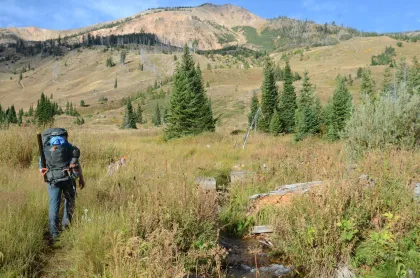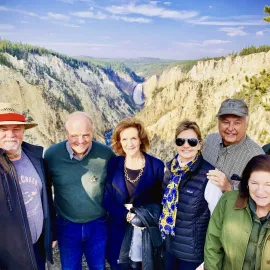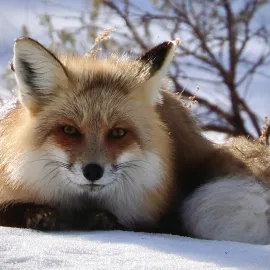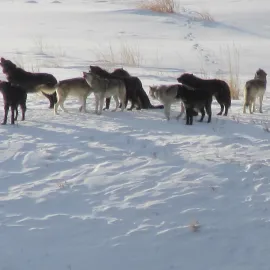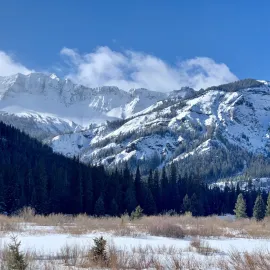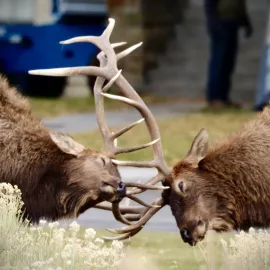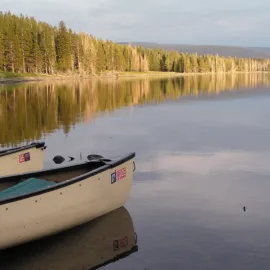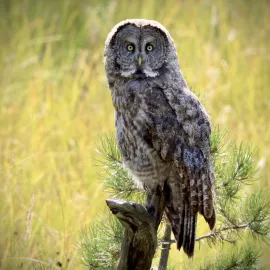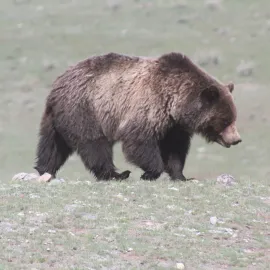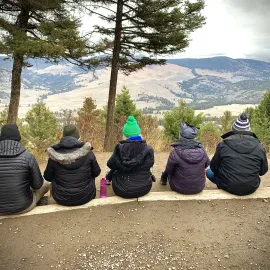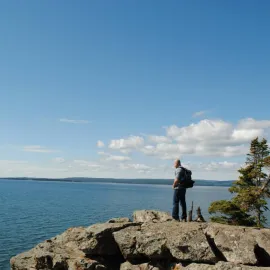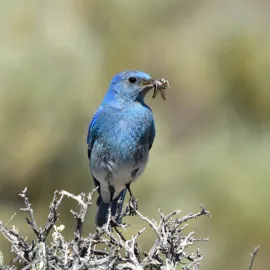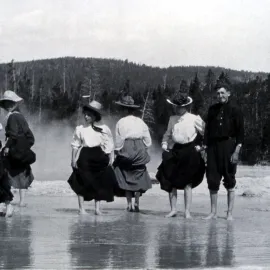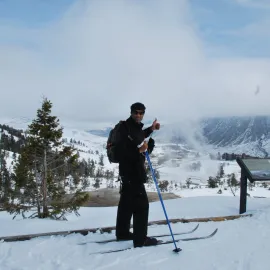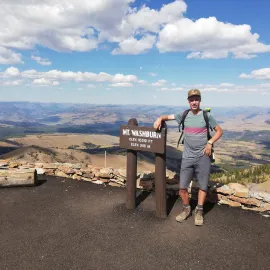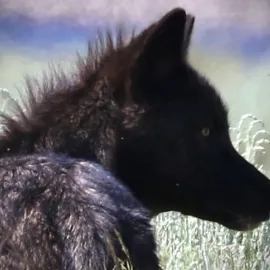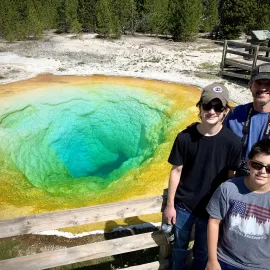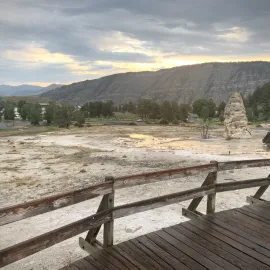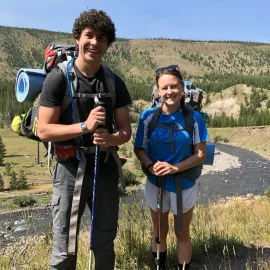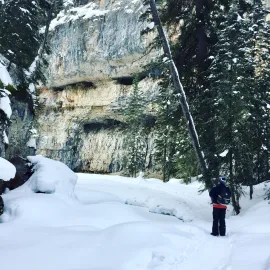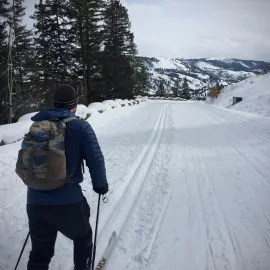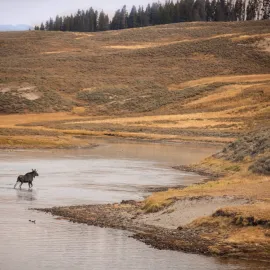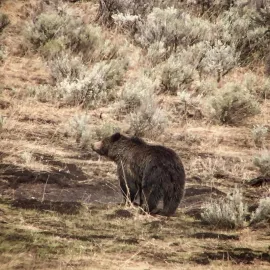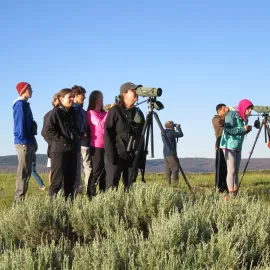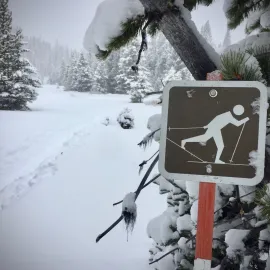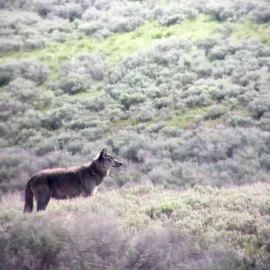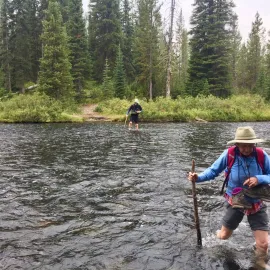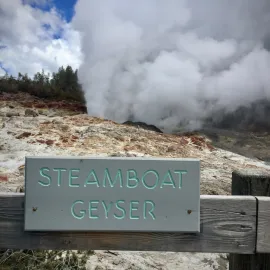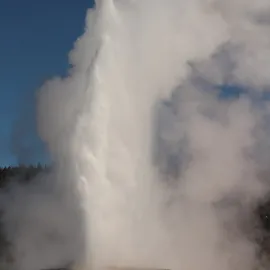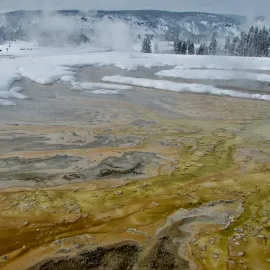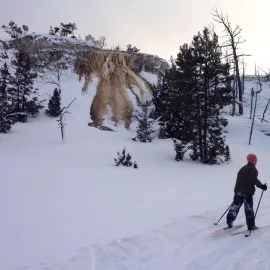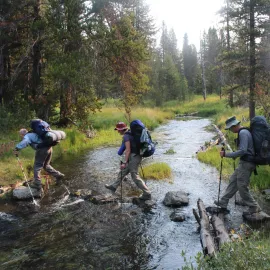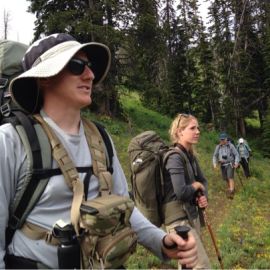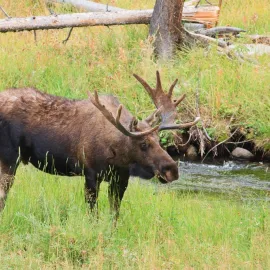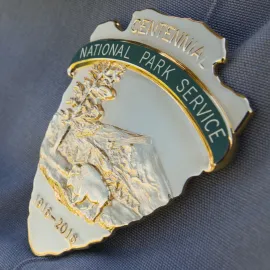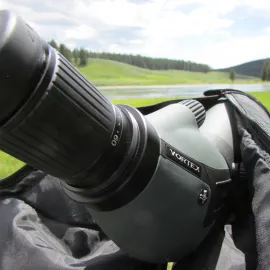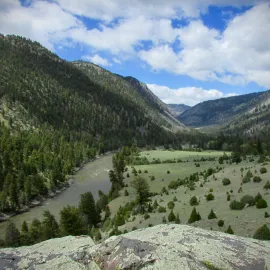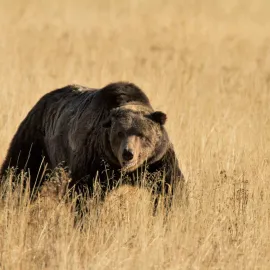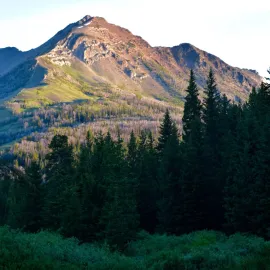Yellowstone's Mountain Ranges
Born of fire and ice, the mountains of Yellowstone are rugged, remote and wild. While the park’s interior is mostly a vast forested volcanic plateau, much of its perimeter rises in high mountain peaks, all part of the Rocky Mountain chain.
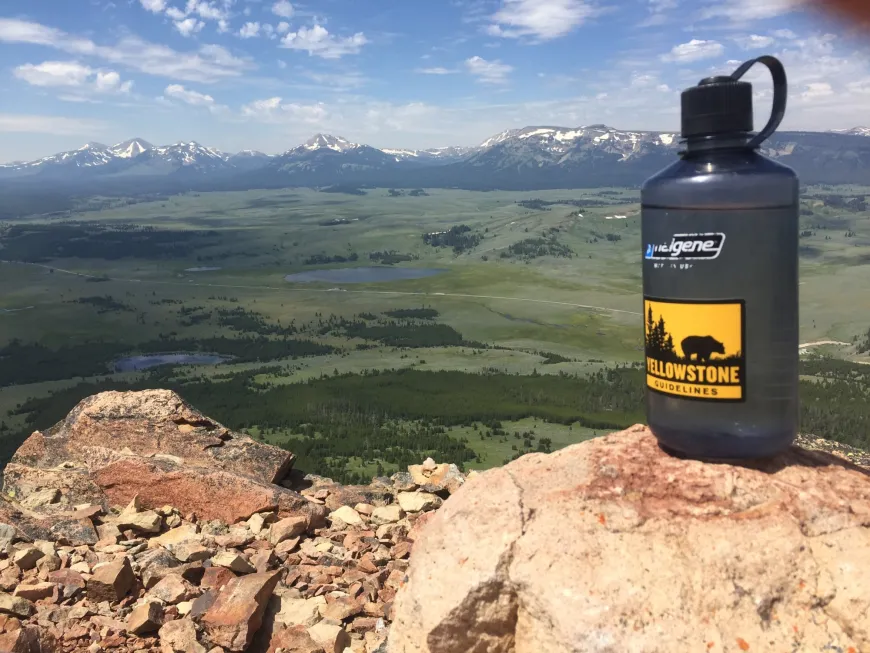
Yellowstone’s Mountains Are Full of Life
Yellowstone’s abundant and cold mountain terrain sustains a surprising diversity of life. Above treeline (9,000 to 10,000 feet), wide meadows of dwarf plants flower in the summer, creating “alpine gardens” of incredible color and variety. Mountain goats and bighorn sheep scamper along the crumbly rock ridges and cliffs and golden eagles ride the ridges of air created by mountain winds. Pikas (alpine rabbits) and yellow-bellied marmots munch on flowers and grasses during the brief summer. Below treeline, bears may be found in the late summer eating the nuts of the Whitebark pine tree, while Clark’s nutcrackers gather and stash these same nuts. Rare and elusive wolverines prowl the remotest corners of the mountains, seeking carrion and raising their kits. Peregrine falcons shriek from cliffs where they lay their eggs right on mountain ledges, and mountain lions prowl the edges of the canyons and cliffs.
Yellowstone Features Several Mountain Ranges
The Continental Divide snakes its way across southern Yellowstone, where waters part between the Atlantic and Pacific on the Two Ocean Plateau, Flat Mountain, Overlook Mountain and the Madison Plateau. These great high ridges collect immense quantities of snow which melts and feeds many of our most important rivers such as the Missouri, Yellowstone and Snake.
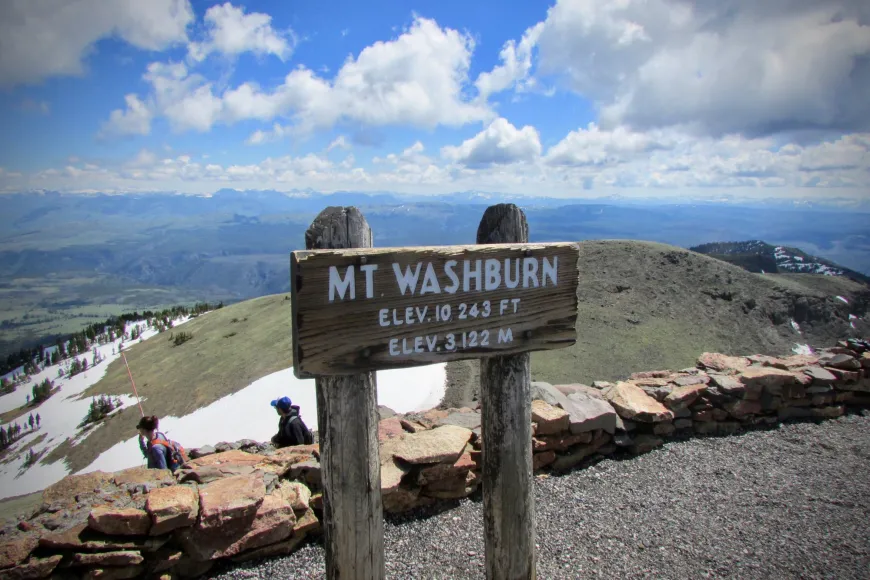
Washburn Mountain Range
Only two mountain ranges lie entirely within Yellowstone’s borders. In the north central part of the park, between Tower Junction and Canyon Village, is the Washburn Range, named for Henry Dana Washburn, leader of the 1870 Washburn Expedition. Dunraven Pass road crosses the range, reaching nearly 9,000 feet. Mount Washburn, at 10,243 feet is the range’s high point and one of the most popular hiking destinations in Yellowstone. Old roads lead to the summit from two different trailheads, allowing hikers to reach the fire lookout tower on the summit via a six-mile round trip hike. Washburn’s summit also provides one of the finest vantage points in the whole park.
Red Mountains Range
Less well known are the Red Mountains, south of Yellowstone Lake. This remote range reaches its high point at Mount Sheridan, 10,308 feet, also the site of a now little-used fire lookout tower. The Red Mountains are thought to have once been connected to the Washburn Range before an eruption of the Yellowstone Caldera obliterated thirty miles of the range. A backpack trip to Heart Lake combined with a hike up the trail to the summit of Mount Sheridan is one of Yellowstone’s finest backcountry outings. Look for the Red Mountains as you drive south along Yellowstone Lake.
Gallatin Mountain Range
On Yellowstone’s northwestern side are the ten thousand foot peaks of the Gallatin Range. Albert Gallatin was Secretary of the Treasury serving under President Thomas Jefferson, and his name became part of the landscape in 1804 when Lewis and Clark named one of the Three Forks of the Missouri River for him. Much of the Gallatin Range in Yellowstone is set aside for the spring, summer and fall as a Bear Management Unit, where human travel is restricted to the few trails that traverse the range to protect grizzly bear habitat. North of Yellowstone, the Gallatins continue to the edge of Bozeman, Montana, forming a spectacular roadless area of more than 500,000 acres. Within Yellowstone is Electric Peak, at 10,992 feet, the range’s stunning high point. The Gallatins are a “truncated” mountain range since the Supervolcano also destroyed and flattened the southern end of the range during a mega-eruption.
Absaroka Mountain Range
The jagged and spectacular Absaroka Range defines the Eastern border of Yellowstone, which follows the top of the range. Named for the Crow, or Apsalookee Indians, this range includes hundreds of peaks and wraps around the northern side of Yellowstone too, forming a stunning backdrop for Paradise Valley in Montana. The great peaks lining the glacial valley of Soda Butte Creek in Northeast Yellowstone, are part of the Absaroka Range. Eagle Peak, at 11,350 feet, Yellowstone’s highest and one of its most inaccessible mountains, is found near the Southeast corner of the park, on the crest of the Absarokas. Like most of Yellowstone’s mountains, the Absarokas owe their existence to millions of years of volcanic activity that predated the Yellowstone Supervolcano. Layer upon layer of volcanic ash and pumice built up, thousands of feet deep. Buried in up to 4,000 feet of glacial ice during the last ice age, these vast volcanic deposits were carved by glaciers into the classic steep-walled mountains we see today.
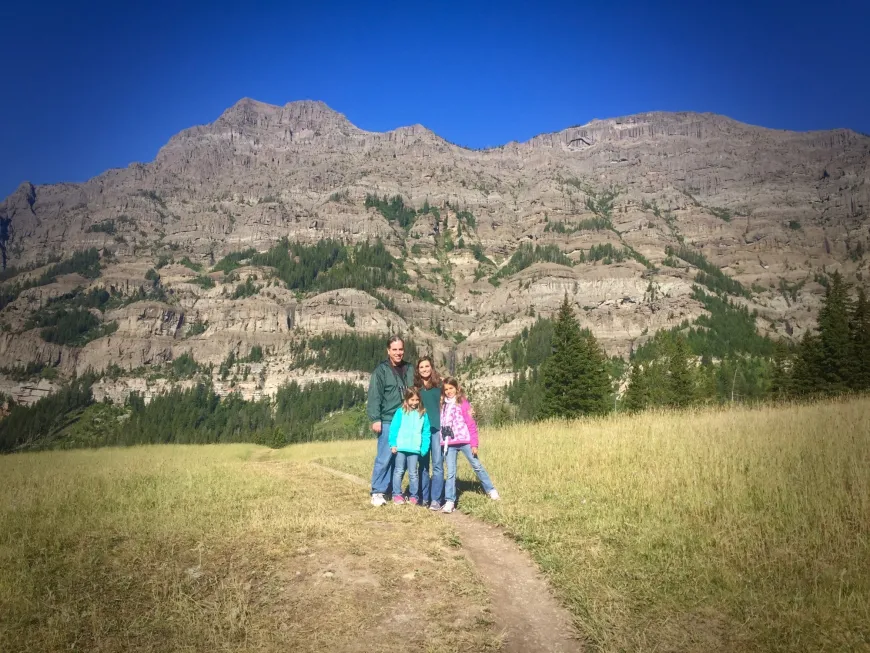
Interspersed within the layers of volcanic material are petrified trees – the greatest collection of such specimens in the world. Both the Absaroka and the Gallatin ranges contain fossil forests, trees 40 to 50 million years old, that have been turned to stone. Specimen Ridge near Lamar Valley shows some of the best examples, with tree stumps up to five feet in diameter.
Avalanche Peak in Yellowstone
Another of Yellowstone’s classic hikes is the trail to Avalanche Peak (10,566 feet) which starts right off the East Entrance road. From this summit, one can get a feel for the vast expanse of jagged peaks stretching north and south to the horizon. For an easier perspective on the Absarokas look across Yellowstone Lake from the west side, or stop at one of the overlooks on the south side of Dunraven Pass.
Teton Mountain Range
Not far from Yellowstone rise much higher peaks. The Teton Range, in Grand Teton National Park, reaches 13,770 feet on the Grand Teton itself. The Beartooth Range, best seen from the amazing Beartooth Highway in Montana, rises to 12,799 feet on Granite Peak, Montana’s highest.
If you are inspired by mountains as I am, or fascinated by the great geologic forces that build them, or love the hardy wild animals that inhabit the high country, or just like to look at them, Yellowstone’s mountains will not disappoint. Millions of years in the making, they are waiting for you to take a look, take a photo, and maybe even take a hike.
Blog Post and photos by Phil Knight. Phil Knight is Bozeman local, outdoor enthusiast, and guide for Yellowstone Guidelines. For tours and adventures in Yellowstone with Phil, contact us at 406-599-2960 or tours@yellowstoneguidelines.com.
